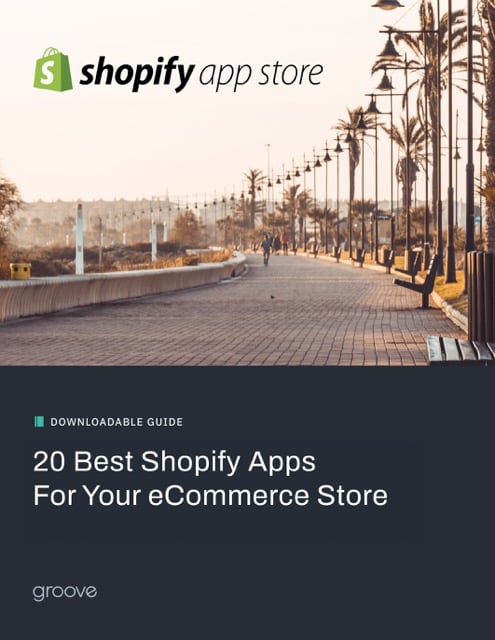As outbound marketing becomes less reliable, marketers and business owners alike are turning to inbound marketing to attract customers. But what is inbound marketing?
Inbound marketing is the concept of developing unique and personalized content to engage prospects and persuade them to convert. Types of content used widely in inbound marketing include blogs, videos, newsletters, SEO, social media and more.
Optimizing and personalizing content to fit the needs of individual consumers is at the core of inbound marketing. It's rooted in spreading brand awareness so that prospects come to your site for more information about your products or services.
In this blog, we're sharing some inbound marketing basics to help you attract, engage and delight customers.
5 Inbound Marketing Basics
Whether you're just getting started with inbound marketing or are a certified inbound expert, be sure to follow these 5 principles to get the most out of your efforts:
- Create content
- Have an SEO strategy
- Focus on solution selling
- Assist customers at any point in time
- Listen to customers on social media
1. Create Content
This one seems obvious, yet there are still businesses out there lacking a variety of content. As we mentioned earlier, personalized content is at the core of inbound marketing.
Attract your audience by publishing content that benefits them - whether it be teaching them how to do something, showcasing new inventory, etc. This will vary based on your industry and unique business goals.
Additionally, share your content on multiple platforms to reach a wider audience. (Our favorites are Twitter, LinkedIn and Facebook.)
2. Have an SEO Strategy
To further attract more customers, optimize your content with an effective SEO strategy. This will help to improve your organic search rankings and take your reach to a new level. Ranking high on search engine results pages helps to increase website traffic, brand awareness and conversion.
In addition to optimizing your content, be sure to optimize your website structure. Search engines take this into consideration when deciding your rank. For a more in-depth look at SEO strategies, check out these 10 tips for an eCommerce SEO strategy.
3. Focus on Solution Selling
Rather than focusing on selling your products or services to customers, focus on selling them a solution to their problems. Customers arrive at your site either to solve a problem they're having or to shop around and make a purchase.
Engage leads by letting them know how your products or services provide value to the problems they're experiencing. You want your customers to be happy and satisfied throughout the whole buyer journey, so all communications between you and the customer must be helpful, informative and beneficial.
4. Assist Customers At Any Point In Time
Swiftly responding to customers' questions or concerns is a critical component of converting visitors. Offer a live chat option on your site that connects visitors to a live customer support agent who can answer all types of questions.
If you don't have the resources needed to staff your customer service department, consider chatbots or automated Q&A systems that mimic human interaction through artificial intelligence. This technology is capable of managing frontline customer service inquiries and transferring prospects to a live chat support agent.
Providing this high level of service with 24/7 availability helps to assist customers throughout the buyer's journey, earn their loyalty and encourage them to convert.
5. Listen to Customers on Social Media
Did you know that 71% of consumers who have had a positive experience with a brand on social media are likely to recommend that brand to their friends and family? Having a consistent social media presence and responding to customer inquiries is a critical component of attracting and retaining customers.
Plus, social media is one of the first places consumers turn to to voice their opinions and personal experiences with brands. Positive comments from happy customers are great to see, but don't forget to nurture the negative comments from dissatisfied customers.
For example, instead of responding to a negative comment with, "We're so sorry to hear that," use different wording to help turn the negative customer experience into a positive one. Try using, "We're so sorry to hear that. How can we help?" or "We're so sorry to hear that. Email [this address] to speak with a customer service representative who will help you with your issue."
Conclusion
By following these inbound marketing basics, you'll create a highly scalable revenue driver and increase website conversion. To help ignite your site's performance, we're sharing 5 more tactics to a successful inbound strategy.
It's important to remember that inbound marketing isn't just one tool, one tactic or single campaign. It's a set of ongoing activities that, when done in tandem, generate more revenues.
If you're not seeing results right away, don't worry. Test and change important variables one at a time to determine the best strategy for your business.
Interested in learning how Groove can help enhance your inbound marketing strategy to convert more visitors into customers? Contact our team of eCommerce experts through the link below, and we'll be in touch!

E-BOOK
20 Best Shopify Apps For Your eCommerce Store
Explore tags:
About the author
Spencer Flaherty is an eCommerce blogger who loves exploring the latest trends and technologies in the industry. From chatbots to virtual reality, they cover it all.
Subscribe to the Groove Newsletter
Get the latest updates and insights straight to your inbox



